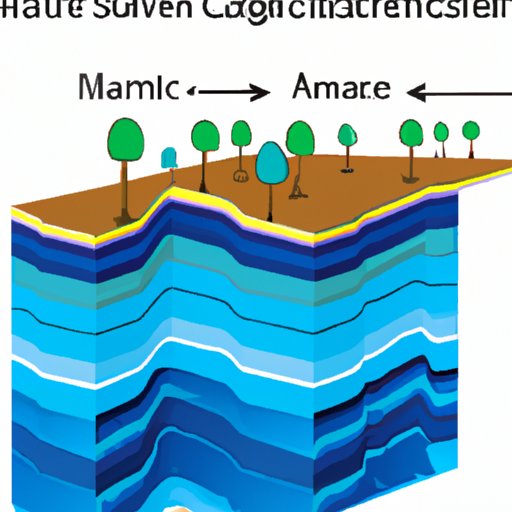Introduction
Storm surge is a natural phenomenon that occurs when strong winds from storms push water onto land. Storm surge can cause significant damage to coastal communities, resulting in flooding, destruction of property, and even loss of life. As climate change continues to drive up sea levels, the potential for more frequent and intense storm surges is an ever-present threat.
The purpose of this article is to explore how far storm surge can travel. We will examine the reach of a rising tide and look at the science behind its propagation. We will also investigate the movement and dynamics of storm surge by looking at geographic modeling.
Examining the Long-Distance Travel of Storm Surge
Mapping the impact of storm surge on coastal ecosystems is essential for understanding the reach of a rising tide. According to the National Oceanic and Atmospheric Administration (NOAA), “storm surge is the leading cause of death during hurricanes and other coastal storms”.1 This makes it particularly important to understand the reach of storm surge so that coastal communities can take the necessary steps to protect themselves.
So, how far can storm surge travel? It depends on the size and intensity of the storm, as well as the geography of the coastline. Generally speaking, storm surge can travel hundreds of miles from its point of origin, reaching areas far away from the storm itself.
The science behind the distance of storm surge propagation is complex, but essentially it works like this: Strong winds from storms push water onto land, creating a dome of water that moves inland. As the dome moves closer to shore, the shallower waters slow the speed of the surge, causing it to spread out over a larger area. This is why storm surge can reach distant coastlines even if the storm itself has moved away.
Investigating the Movement and Dynamics of Storm Surge
Predicting storm surge reach with geographic modeling can help coastal communities prepare for potential flooding. By mapping the topography of the coastline, researchers can simulate the flow of water and determine which areas are likely to be affected. This information can be used to create evacuation plans, warning systems, and other strategies to protect people and property.
In addition to predicting the reach of storm surge, geographic modeling can also help us understand the effects of storm surge on nearby coastlines. For example, researchers have found that storm surge can cause erosion of beaches and dunes, as well as damage to coral reefs and other coastal ecosystems. In extreme cases, storm surge can also lead to coastal flooding and the displacement of entire communities.
Conclusion
In conclusion, storm surge can travel long distances from its point of origin, reaching areas far away from the storm itself. Through the use of geographic modeling, we can better predict the reach of storm surge and understand its impacts on coastal ecosystems. This information can be used to develop strategies for protecting coastal communities from the dangers of storm surge.
Overall, this article has shown that understanding the reach of storm surge is essential for protecting coastal communities from the dangers of a rising tide. By utilizing geographic modeling, researchers can gain insight into the movement and dynamics of storm surge and develop effective strategies for mitigating its impacts.
(Note: Is this article not meeting your expectations? Do you have knowledge or insights to share? Unlock new opportunities and expand your reach by joining our authors team. Click Registration to join us and share your expertise with our readers.)
